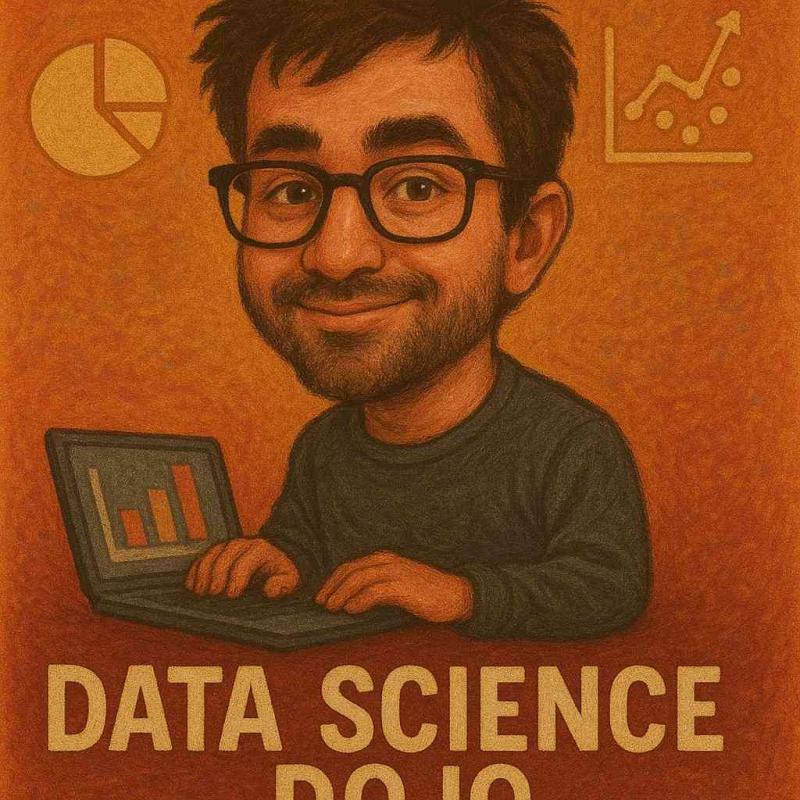StatQuest with Josh Starmer: The Most Fun You'll Ever Have With Statistics (Seriously)
Let me confess something up front: I used to think statistics were designed to torture students. Like a weird academic hazing ritual. You’d go in bright-eyed, and then—bam!—out come p-values, confidence intervals, and something terrifying called “eigenvectors.” (Just the word sounds villainous.)
Then I found StatQuest with Josh Starmer.
And just like that, everything clicked. Also—I laughed. Like, real laughs. While learning statistics. Who knew that was even allowed?
Who Is This Josh Starmer Guy Anyway?
Picture this: a gentle Southern accent, a clean whiteboard, and a ukulele. Yes, seriously—a ukulele.
Josh Starmer is the creator of StatQuest, a wildly popular YouTube channel where he explains complex statistical and machine learning concepts like he's walking you through how to make toast. Slowly. Clearly. With a quirky grin and just enough flair to keep things memorable.
He’s not just some guy with a camera and a good voice, either. He’s got serious credentials in bioinformatics and data science, which makes the clarity of his teaching even more impressive. You’d think someone that smart might be intimidating. Nope. He’s basically your nerdy friend who happens to be brilliant and genuinely excited to help you understand ANOVA.
What Makes StatQuest Special?
So many educational channels are great at teaching content, but they miss the human part. You know—actually making you feel good about learning. Josh nails both.
Here’s what stands out (and why I keep going back):
1. Clarity, Clarity, Clarity
Josh breaks everything down into bite-sized chunks. He doesn’t just tell you what a decision tree is—he builds it with you, piece by piece.
You know those videos where someone starts explaining logistic regression and five minutes in you're questioning your life choices? Not here.
Some all-time favorites:
-
“StatQuest: Logistic Regression” — Easily the clearest explanation of the sigmoid function I’ve ever seen.
-
“StatQuest: Principal Component Analysis (PCA)” — I finally understood eigenvectors without crying. That’s worth something.
-
“StatQuest: Random Forests” — Made ensemble learning feel like assembling LEGO. (Fun LEGO. Not the painful foot ones.)
2. He Uses Humor—But It’s Smart Humor
Not “slapstick” or gimmicky. It’s more like a wink. A ukulele song here, a quick doodle of a goofy distribution there.
And the best part? He never sacrifices accuracy for entertainment. You’ll laugh and understand how gradient descent works.
3. He Doesn’t Assume You’re a Genius
This, IMO, is huge.
He talks to you like you’re capable—but maybe just a bit confused. Which, let’s be honest, describes most of us when we’re learning this stuff. He explains everything from the ground up without making you feel like you missed a meeting (or a math degree).
A Closer Look: Topics That Hit Hard for AI and Data Science
StatQuest isn't just a stat buffet—it’s a precision menu for machine learning, data science, and everything math-adjacent.
If you’re trying to get into AI or data science, here's where Josh shines like a beautifully normalized histogram:
Machine Learning
From basic decision trees to ensemble models and even neural networks, Josh covers the critical algorithms with practical clarity.
Key hits include:
-
Decision Trees & Random Forests: Understand how splits work, Gini impurity, entropy—all that jazz.
-
Gradient Boosting Machines (GBMs): Explained with more logic than most textbooks muster.
-
Neural Networks: He breaks down what backpropagation really does—without sounding like he’s reciting a PhD thesis.
Core Statistics
Yes, the foundational stuff is just as strong.
Topics like:
-
Hypothesis Testing
-
P-values and Confidence Intervals
-
Linear vs. Logistic Regression
-
ANOVA, Chi-Square Tests, t-Tests
It’s basically the starter kit for statistical literacy, especially important when you want to validate a model or publish anything remotely scientific.
Deep Dives and Playful Summaries
-
Josh often follows up a technical video with a “Summary Quest”—a musical recap where he sings the key takeaways.
-
You’ll remember “low p-value = reject the null!” more easily when it’s stuck in your head to a tune 😂.
StatQuest vs. The Rest
Now, you might wonder—how’s StatQuest different from something like Khan Academy or 3Blue1Brown?
Here’s my take:
| Platform | Strengths | Personality |
|---|---|---|
| StatQuest | Stats & ML with humor, clarity, and pacing | Quirky genius with a ukulele |
| Khan Academy | Wide breadth, traditional structure, solid exercises | Friendly teacher vibe |
| 3Blue1Brown | Deep, visual explanations (especially linear algebra) | Animated math poetry |
StatQuest wins when you want a clear, honest explanation of something tough—without needing to pause every 30 seconds or rewatch five times. And you just might giggle.
Personal Moment: My StatQuest Epiphany
I once tried to learn PCA from a textbook. Took me three hours, a headache, and one mild existential crisis.
Then I watched Josh explain it in 12 minutes using simple drawings and analogies involving clouds of points. Twelve minutes. I finally understood variance along axes. I finally got it.
I actually said “OH” out loud. Scared my cat.
Any Downsides?
Sure. A few, but nothing tragic.
-
No interactive practice: You don’t get built-in quizzes or coding challenges.
-
Primarily YouTube-based: If you prefer written material or want more structured learning paths, you might want to supplement with courses.
-
Not always super technical: If you're looking for deep-dive theory proofs, you’ll need to pair StatQuest with more rigorous texts.
But let’s be real: Josh’s mission is clarity, not complexity. And he nails it.
Final Verdict: Watch StatQuest Already
If you're in a love-hate relationship with statistics (or a hate-hate one), StatQuest is your friendly mediator. It doesn't overpromise. It just delivers—with clarity, humor, and the occasional strummed chord.
Whether you're learning machine learning, brushing up for a data science interview, or finally tackling that online AI course—you need this channel in your toolkit.
And hey, if you find yourself singing “p-values are low, null must go 🎵” at 3 AM, don’t worry. That just means it’s working.
Go subscribe. Your future self (and your models) will thank you.



